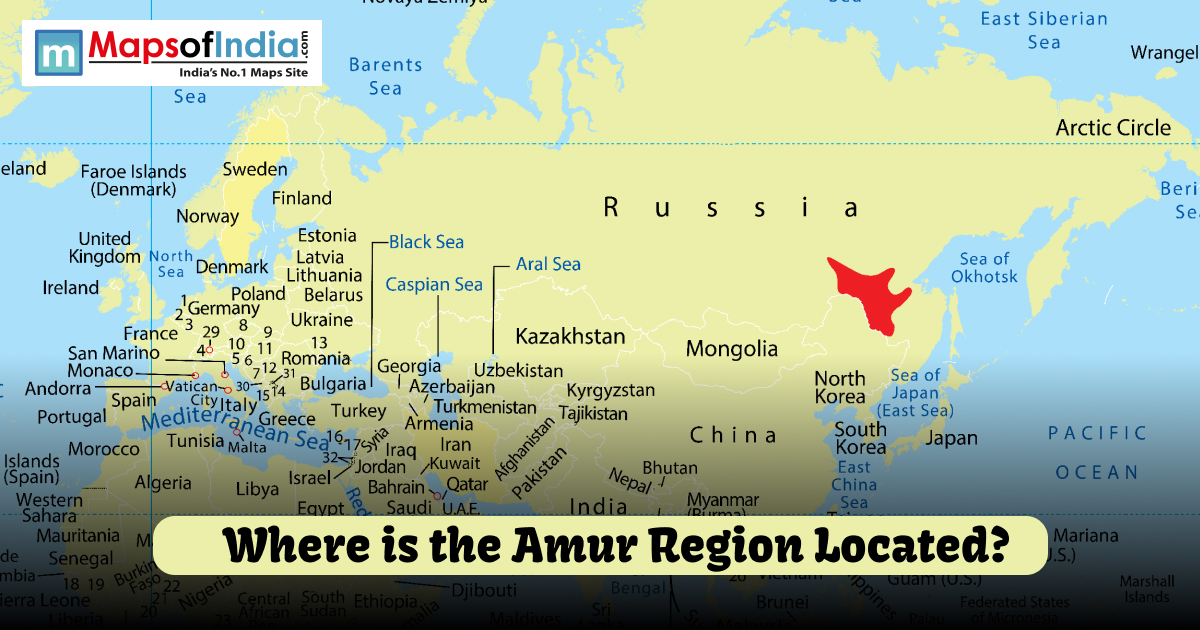
Amur Region is a region of Russia formally called the Amur Oblast and it is found in the Far Eastern Federal District of Russia. It is a huge administrative territory in the southeastern part of Siberia, which is a kind of the geographical and strategic border of Russia with China. Its exact position and topographical variety result in the fact that it is one of the most geopolitically important territories within the Russian Federation.
Geographical Location
The Amur Region is located between the latitudes of 50° and 56° North and longitudes 121° and 134° East. It is 363,700 square kilometres, covering a territory which is bigger than most countries in Europe. The region has been given international and domestic boundaries:
- On the south, it is delimited by the Heilongjiang Province of the Chinese Republic, whose boundary is the River Amur, a natural barrier.
- On the west, it is adjacent to Zabaykalsky Krai.
- To the north, it is bordered by the huge region of the Republic of Sakha (Yakutia).
- On the east, it borders on Khabarovsk Krai.
It is called the region of the Amur River, which is one of the most significant rivers of the Russian Far East and which shapes the border between Russia and China along several hundred kilometres.
Capital and Major Cities
Blagoveshchensk is a city that serves as the administrative centre of the Amur Region and is situated right on the northern bank of the Amur River. On the opposite side of the river, one can see straight to Heihe, which is a Chinese city on the opposite side of the river, as seen from Blagoveshchensk along the riverbank. Such nearness has placed Blagoveshchensk at the centre of international trade, transport and diplomacy.
There are other significant towns and cities in the Amur Region:
- Belogorsk
- Tynda (a key hub on the Baikal-Amur Mainline)
- Svobodny
- Zeya
Topography and Climate
The Amur Region is characterized by diverse terrain, with river valleys, low mountains and forested plains. The southern region of the area is generally flat and fertile, with farming activities taking place as compared to the northern regions that are hilly and rocky.
The climate is continental with cold winters and humid and warm summers. This climate promotes the combination of taiga forests and fertile cultivable fields, more so in river basins.
Strategic Importance
The Amur Region, where it is situated, forms an important trade element, besides defining national security and foreign policy of a country, since its territory is situated between Russia and China. The construction of the Blagoveshchensk-Heihe cross-border bridge, commissioned not so long ago, is one of the most obvious infrastructure projects that joins the two countries, stimulating economic and logistic integration.
More so, the area has abundant natural resources such as gold, coal, oil, timber and hydropower, which explains why it forms a critical component of the energy and resource economy of Russia.
To sum up, the Amur Region belongs to the Far East of Russia and is next to China and functions as the connection point between two giant neighbors. Amur Oblast with its natural resources, geographical position as the border region, and developing infrastructure remains to contribute largely to the formation of the Far Eastern future of Russia.